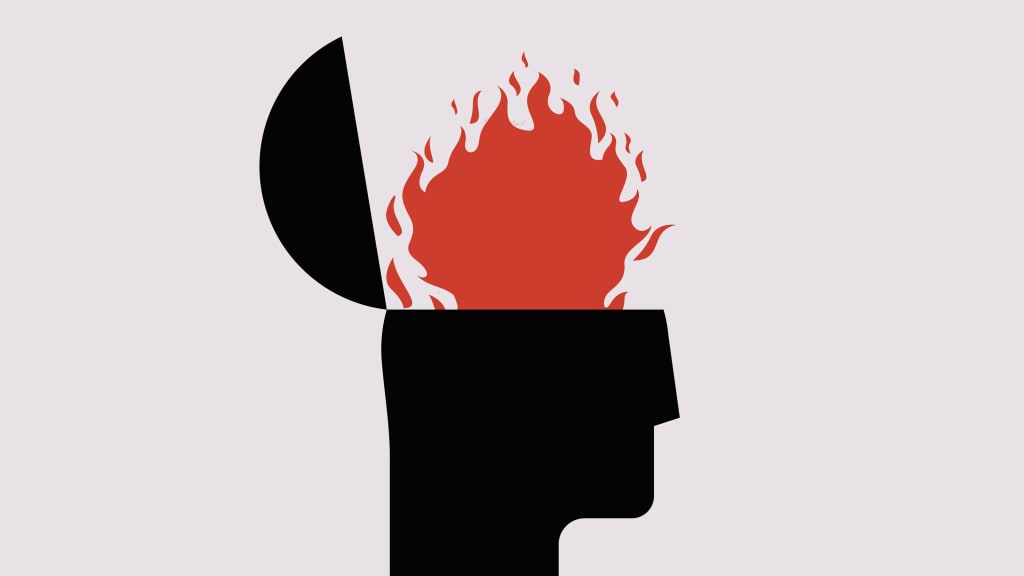When you’re a busy entrepreneur, it’s easy to convince yourself you need to just push through burnout. With people relying on you and endless problems to solve, many business owners feel like they don’t have the time or space to take a step back and deal with their mounting stress and exhaustion. Sure, a long vacation or a less intense schedule would be nice, but it will have to wait until some magically less stressful future time.
If this sounds familiar, there’s a bunch of brain research I want to show you.
A portrait of the burned-out brain
We tend to think of burnout as an emotional or mental condition, and it certainly does have emotional and mental effects. But everything you feel or think arises from your brain, so mood swings, foggy thinking, or an extra quick temper are all reflected in the physical functioning of the brain somewhere. Research shows that, when it comes to burnout, those brain changes are anything but minor.
Recent research out of Sweden compared 40 study subjects who all had worked more than 60 hours a week for multiple years and received a formal diagnosis of burnout with a matched control group of people with the same demographic profile who weren’t suffering from burnout.
Tests revealed that the burned-out volunteers were much worse at controlling or suppressing negative emotions. That was no surprise. Overreacting and a tendency toward negativity are classic symptoms of burnout. What may be more surprising is what the researchers observed when they conducted brain scans of the two groups.
“The two groups showed key differences in the amygdala — a brain structure that is critical in emotional reactions including fear and aggression. Participants in the burnout group had relatively enlarged amygdalae, and also appeared to have significantly weaker connections between the amygdala and brain areas linked to emotional distress, specifically the anterior cingulate cortex (ACC). The more stressed an individual reported feeling, the weaker the connectivity between these brain regions appeared on the R-fMRI,” reports the Association for Psychological Science.
The burnout sufferers also had weaker connections between the amygdala and the medial prefrontal cortex, a part of the brain involved in executive function or the ability to stifle impulses, make long-term plans, and control our behavior in order to carry them out.
Translated into everyday language that means that the amygdala, which works kind of like your brain’s alarm system responsible for signaling when there’s something in your environment you need to be upset about, is overactive. Meanwhile, the systems meant to counteract the amygdala with logic, perspective, and coping mechanisms are weakened. It’s as if an emergency siren keeps blaring for every little thing and the off switch is sticky.
Unsurprisingly, that’s not just deeply unpleasant but bad for performance. A separate research review that looked at 15 high-quality studies on the cognitive effects of burnout found “executive attentional and memory systems appear to suffer in association with burnout, and cognitive functioning is impaired in burned-out individuals,” APS also notes. Burnout officially does a number on your brain.
Can your brain recover from burnout?
That should serve as a warning to any wildly overworked professional out there who is considering pushing through their mounting burnout just a little bit longer. White knuckling your burnout if doing real damage to your brain.
And what if it’s a little late for that advice and your burnout is already well advanced? (Surveys show this applies to an incredible number of people after more than two years of pandemic chaos.) “Can you reverse these changes in the brain once they occur? Studies in mice show it’s possible, and a 2018 study in people found cognitive behavioral therapy for burnout reduced the size of the amygdala and returned the prefrontal cortex to pre-stress levels,” reports CNN.
Other activities beside therapy can help your brain recover too. Yale psychiatry professor Mark Rego has “suggested doing hands-on activities, such as arts and cooking, and indulging the senses — especially in nature — and talking to people often” to speed recovery. He also recommends “quieting the mind, whether through sports, long walks, or yoga.”
All of which sound like doable suggestions. But before you can sign up for that yoga class or commit to a weekly hike with friends you need to admit that you can’t just power through your stress. Real changes to your working conditions are needed. Burnout isn’t failure of will. It’s a breakdown of essential systems in your brain, and it needs to be treated as a matter of medical need, not a failure of character or toughness.
Aug 9, 2022
Source: How Burnout Physically Changes Your Brain (It’s Not Pretty)

